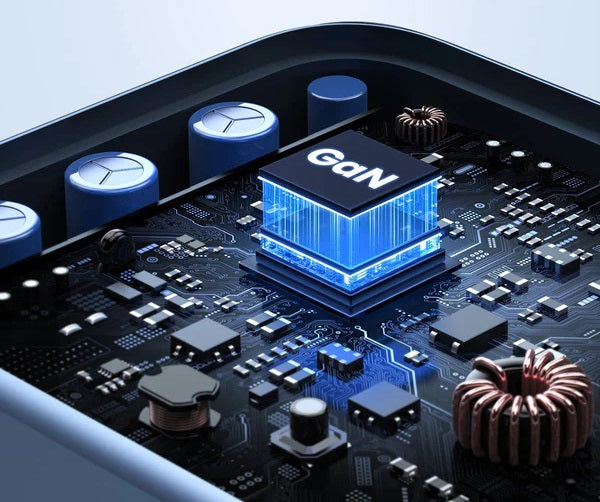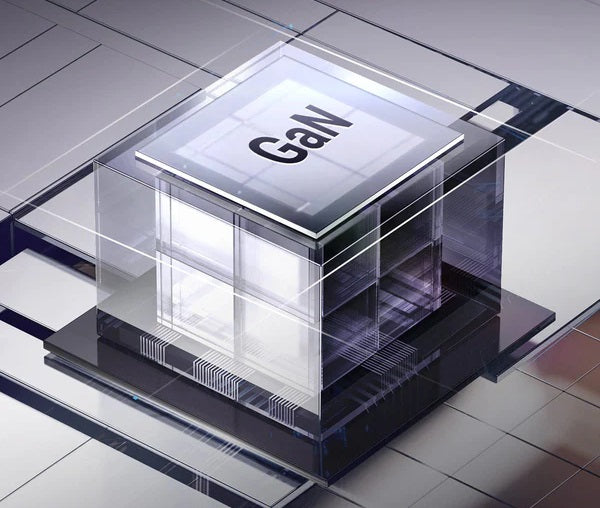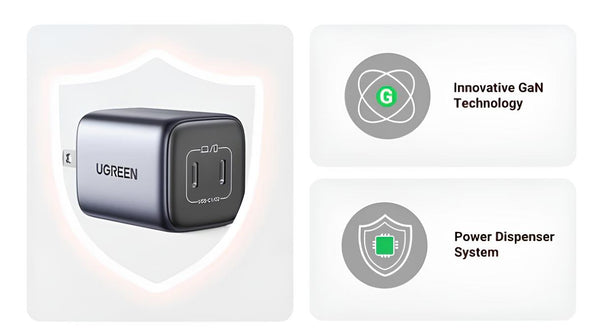Have you started noticing that your phone, which previously worked pretty well, has now started heating up whenever you leave it plugged in on the socket for the battery to charge up? If this is the case, youâre probably wondering why this started happening. Well, youâre not alone. Letâs dive into the reasons behind this common issue and what you can do to prevent it.
If youâve ever asked,âWhy does my phone get hot while charging?â, weâve got you covered. Read on to discover the common causes and how you can fix or prevent this issue.
Key Takeaways
-
Overheating During Charging Is Common: Phone overheating while charging can be caused by multiple factors like overcharging, fast charging, poor ventilation, or using subpar chargers and cables.
-
Avoid Overcharging: Leaving your phone plugged in after it reaches 100% can lead to heat buildup, particularly with older devices or low-quality chargers. Always unplug when fully charged to avoid strain on the battery.
-
Fast Charging and Wireless Charging Generate Heat: While convenient, fast charging can cause significant heat. Wireless fast charging is even more prone to inefficiencies. Use only the appropriate charger for your phone to reduce this effect.
-
Poor Ventilation and Overuse Contribute to Overheating: Phones need air circulation to dissipate heat effectively. Using your phone while charging or using it in hot environments exacerbates overheating issues.
-
The Dangers of Overheating: If left unchecked, overheating can permanently damage the battery, reduce charging efficiency, and lead to poor phone performance and system malfunctions.
-
Quick Fixes: Simple steps like closing background apps, using airplane mode, removing your phone case, or putting your phone in a cool place can help prevent or reduce overheating.
-
Long-Term Prevention: Prevent future overheating by avoiding overcharging, using high-quality charging accessories, keeping an eye on your battery health, and charging in cool environments.
-
Specific Concerns for iPhone: iPhone models, like the iPhone 12 Pro, may experience overheating due to fast charging or running resource-heavy apps. Using certified chargers like Ugreen can help mitigate this.
Reasons Why Your Phone Gets Hot When Charging
A phone getting hot while on charge is a relatively common issue, and there isnât just one reason as to why it happens. In fact, there are truckloads of causes that can lead to this common occurrence. If you are someone who is wondering that why does my phone get hot while charging, and want to narrow down all the reasons for it, we have them listed below for you:
1 Overcharging
Your phoneâs battery is designed to charge up to 100%, and once it reaches that capacity, modern smartphones (like iPhones) stop charging. However, some phones might continue to trickle-charge even after reaching full capacity, which can cause heat to build up. Overcharging is more of a concern with older devices or low-quality chargers, which may not have efficient mechanisms for managing this trickle charge.
That being said, battery degradation over time can cause your phone to heat up when charging, even if itâs not technically overcharging.
If your phone isnât charging properly or feels unusually hot, it might be due to a faulty charger, charging cable, or even a software issue. For more tips on troubleshooting charging problems and preventing battery wear, check out this detailed guide on how to fix your phone if itâs not charging.
2 Fast Charging
Fast chargers are great for quickly powering up your device, but they can also lead to overheating. When charging quickly, your phone draws in power at a higher rate, which generates more heat. To avoid this, always use a charger thatâs specifically designed for your phone. If your phone supports fast charging, it will likely have thermal management to help dissipate the heat, but even then, using a charger with higher voltage or a poorly designed adapter can make the issue worse.
Additionally, wireless fast charging tends to create more heat than wired charging, due to the inherent inefficiencies in power transfer. Click to read more: How to Choose the Right Charger?
3 Poor Ventilation
Imagine a room that doesnât have any space for air to pass through; what would happen? It will heat up, right? Your phone is similar to this enclosed room and needs enough space or ventilation around it when charging to help release the heat that is generated by the phoneâs internal components. If proper ventilation or circulation is not provided, your device will heat up.
4 Poor Quality Cables and Chargers
Low-quality cables and chargers are often overlooked but are key contributors to overheating. Cheap or substandard chargers fail to convert energy efficiently, which leads to heat buildup. This is especially true when using chargers not designed for your phone, such as when an iPhone is charged with a non-Apple-certified charger. To prevent overheating, always use high-quality, certified charging accessories and avoid cheap, unbranded cables.
5 Overusing Phones when Charging
Many people have adopted a really bad habit of constantly using their phones. This means that even when their phone is on charge, they tend to use it often. Constantly using your phone when it is on charge is one of the primary reasons why your phone might overheat. This is because the excessive usage of the phone when it is charging can put stress on the battery, which then can lead to it overheating. The CPU works harder to run these apps, which can cause the phone to heat up. Using resource-intensive apps while charging, like games or video editors, significantly increases the chances of your phone overheating.
6 Aging Batteries
A mobile phone is a device that has an efficient working battery. However, like all other batteries, the batteries of mobile phones tend to degrade over time as well. Hence, another possible reason why does your phone gets heat up while charging is probably because your battery has come to its lifeâs end and might need repair.
Dangers of Phone Overheating While Charging
If your phone continues to overheat, what could happen? Well, if this is another one of your queries, let us answer it for you as well:
1 Permanent Battery Damage
If you do not take measures to control your phoneâs excessive overheating, it can lead to a permanent damage effect on the battery. This can reduce the batteryâs lifespan and its capacity as well. Click to read more: Why Is My Phone Battery Dying So Fast?
2 Reduced Charging Efficiency
When your device continues to get hot, its charging efficiency decreases tremendously, too. This means that the hotter your device will be, the slower it will charge the battery.
3 Rapid Degradation of Components
Your phone is an accumulation of small components all running together to provide the best results. However, excessive heat can damage these components without the phone, which causes them to degrade quicker than they should.
4 Poor Performance Display
You may have noticed that when your phone heats up, it directly impacts its performance as well. An overheated phone tends to cause problems with lagging and freezing, and hence, you should take measures to prevent this, or else it can lead to more damage.
Quick Fixes to Cool Your Phone While Charging
Now you know why does my phone get hot when charging and the harms it can bring. You must now be wondering how you can keep your phone cool when itâs on charge, right? Well, here are some quick fixes listed below:
1 Close All Running Apps & Stop Using It
If your phone overheats while charging, first close all background apps and stop using it immediately. Too many apps can slow down charging and cause overheating.
2 Uninstall the Crashing App
Try noticing if you have recently installed a new application or game, which may become the cause of your phone heating up. While this may sound unlikely to some, different applications on the phone can cause all sorts of problems if left unchecked. Hence, you need to spot applications and delete any that may cause your phone to heat up. How can you do this? Well, follow the steps mentioned below:
- Go to Settings and then select âPrivacy.â
- On the Privacy pop-up, choose âAnalyticsâ and then select âAnalytics Data.â
This will show you which application is using what resources and help you figure out which app might be the cause of the problem.
3 Switch off the Background App Refresh
The background app refreshes help download up-to-date information online even if you are not using the particular application. While this aspect sounds excellent in terms of staying updated, it also becomes a source of downloading excessive data while using your phone, even if you are not using that particular app. This can lead to overheating, and hence, you must switch it off. Here is how you do it
- Go to Settings and then select âGeneral.â
- A new window will appear. Choose âBackground App Refreshâ and switch off the toggle.
4 Switch to Airplane Mode or Turn It Off
The airplane mode significantly decreases the power that your phone needs to charge. This ultimately can help keep the temperature on your phone low. Switching off the airplane mode will turn off features like Wifi, Bluetooth, and location services, all of which will together work on reducing the strain on your phoneâs battery and hence prevent it from overheating while on charge. Or, you can stop the overheating problems by just shutting your phone down.
5 Remove the Phone Casing
Remember how we talked about your phone not getting enough ventilation being one reason why it heats up? Well, it is time to look into how you can prevent this from happening. The best way to ensure that your device remains cool by providing better ventilation around the body of your phone is by taking off your phoneâs case.
6 Put Your Phone in a Cool Place
Yes, you read that right. You can cool an overheating phone by just putting it in a cool place, a refrigerator for example. How phone overheat when charging happens? When electricity flows through the charging cable and into the phoneâs battery, some energy is lost as heat due to the resistance in the wires and components. To bring down the temperature on the phone, you can place your phone in a cool, air-conditioned room and allow more airflow around it.
7 Use a Cooling Pad or Fan
Another way to stop your phone from overheating when charging is to use a cooling pad or fan. The principle is the same as mentioned above, by positioning a small fan or a cooling pad under the phone, you can create more airflow for it, which helps maintain a lower temperature while charging.
8 Charge Less Frequently
When you find that your phone is already very hot but not fully charged yet, donât be unwilling to stop charging it. Instead of keeping the phone plugged in for long periods, stop charging in time, wait for it to cool down, and recharge it in shorter bursts, which can help manage heat build-up.
How to Prevent Phone Overheating When Charging from Happen Again?
The measures above help you cool your phone down instantly, but do not prevent it from happening again. Here are some measures you can take to protect your phones, chargers, and batteries in the long term.
1 Do Not Overcharge
As we mentioned above, overcharging is one of the most common reasons why your phone overheats. Hence, it is essential to prevent this particular factor by making sure that you charge your phone as long as itâs necessary and unplug it as soon as it is full. This will help ensure that no damage to the battery occurs.
For iPhone users, enabling Optimized Battery Charging can help reduce overheating, especially during overnight charging. This feature delays charging past 80% until just before you need the phone, minimizing the amount of time the battery spends at 100%, which can generate excess heat.
This is particularly useful for people who charge their phones overnight, helping to prevent overheating and prolonging battery life.
2 Purchase High-Quality Chargers and Cable
Charging docks and cables also play a significant role in ensuring that your phone remains cool when on charge. Hence, instead of purchasing cheap docks and chargers, it is essential to invest in good quality ones the first time alone. This will help ensure that your phone charges efficiently without overheating.
Choosing chargers and cables from a reputable brand such as Ugreen is more secure. These products typically have higher quality and more reliable performance, providing a safer and more efficient charging experience.
{{UGPRODUCT}}
3 Monitor Battery Health
Keep an eye on battery health and replace the battery if it shows signs of wear. A degraded battery can generate more heat during use.
4 Reduce Screen Brightness
Lowering the screen brightness or using adaptive brightness can help reduce energy consumption and heat production.
5 Limit Resource-Intensive Apps
Avoid using high-demand apps (like gaming or video streaming) for extended periods, especially while charging, as they can significantly increase heat generation.
6 Switch to Wireless Charging
If youâre frequently dealing with overheating while using a fast-wired charger, it might be time to explore wireless charging as a gentler alternative. Wireless chargers tend to generate less heat because they deliver power more slowly and consistently, reducing the strain on your phoneâs battery.
7 Avoid Charging in Direct Sunlight or Hot Environments
Phones can overheat much faster if they are placed in direct sunlight or hot environments while charging. Even if youâre using a high-quality charger, the extra heat from the environment can cause the phoneâs temperature to rise significantly. To prevent this, always charge your phone in a cool, shaded area or an air-conditioned room.
Why Does iPhone Gets Hot when Charging?
Many iPhone users have asked why does my phone get warm while charging, and the iPhone 12 Pro heat issue was once very hot. This heating can occur due to several factors, including the batteryâs chemistry, the current flowing through the charging cable, and the electrical resistance within the device. For instance, many users have reported significant heat issues with the iPhone 12 Pro, particularly when using fast charging options or while running resource-intensive applications simultaneously. Such heat generation is typically normal, but excessive heat can lead to performance throttling and, over time, may affect battery health.
To mitigate overheating, itâs essential to use high-quality charging accessories. Many users opt for professional chargers like the Ugreen iPhone charger, designed to provide optimal power delivery while minimizing heat generation. These chargers are built to adhere to safety standards, ensuring that the voltage and current supplied to the device are appropriate. By using a reputable charger, you not only enhance charging efficiency but also reduce the risk of overheating, safeguarding the longevity of your iPhoneâs battery.
{{UGPRODUCT}}
Conclusion
If you are someone who was wondering why does my phone get hot when charging, then we hope this article was helpful to you. Let us know, out of all our reasons mentioned above, which one turned out to be the cause for your device to overheat and what methods did you take to cool it down.
FAQ about Phone Overheating
Is It Normal for my iPhone to Get Hot While Charging?
When asking why does my phone get hot when charging, many people think itâs normal so donât need to pay much attention to that. Devices tend to get a tad bit warm due to the increased demand for power generated by the battery. However, your phone becoming excessively hot is a sign of an underlying issue that needs to be addressed.
Should I be Worried if my Phone is Hot while Charging?
We wonât particularly call it an alarming situation if your phone is hot while charging. However, it is also something that you should not neglect. There is always a reason as to why a device heats up, and you should get it checked.
How Do I Stop My iPhone from Overheating?
There are multiple methods that we have mentioned above that can stop your phone from overheating. Take a look at those.
- Cool Down your Phone
- Uninstall the Crashing App
- Switch off the Background App Refresh
Should I Worry About My iPhone Getting Hot?
It is ideal to verify all the reasons we have mentioned above and align it with what might be possibly a cause of your phone getting hot.
- Overcharging
- Fast Charging
- Poor Ventilation
- Poor Quality Cables and Chargers
- Overusing Phones when Charging
- Aging Batteries
]]>



















































































